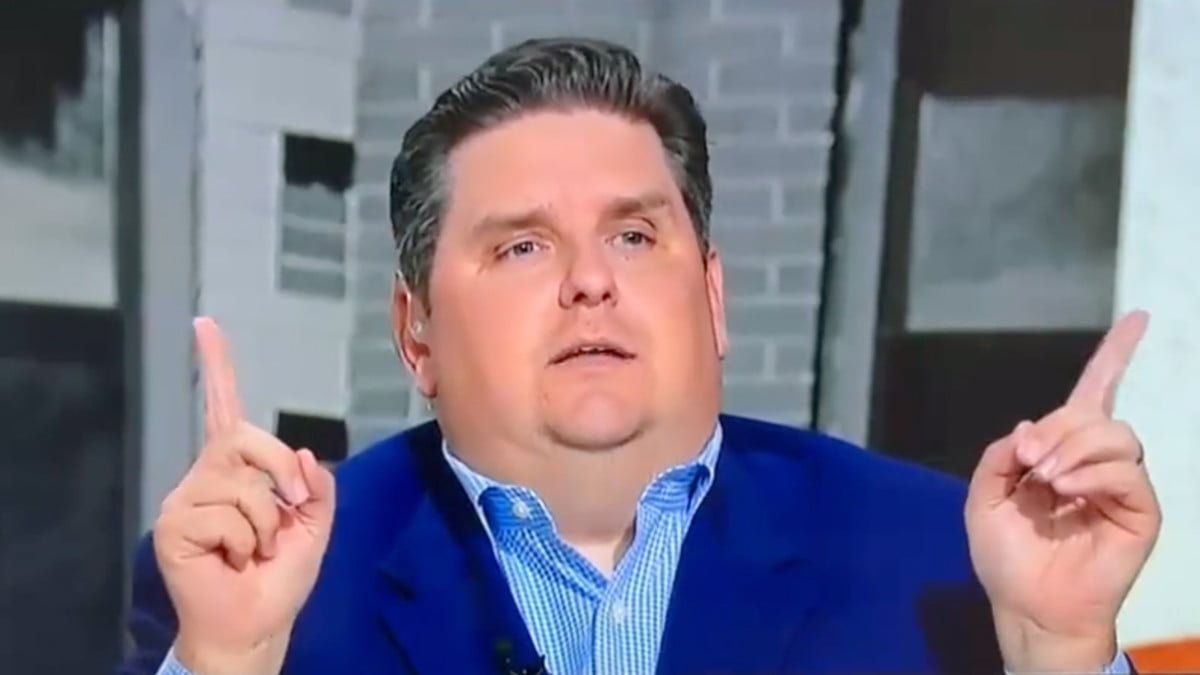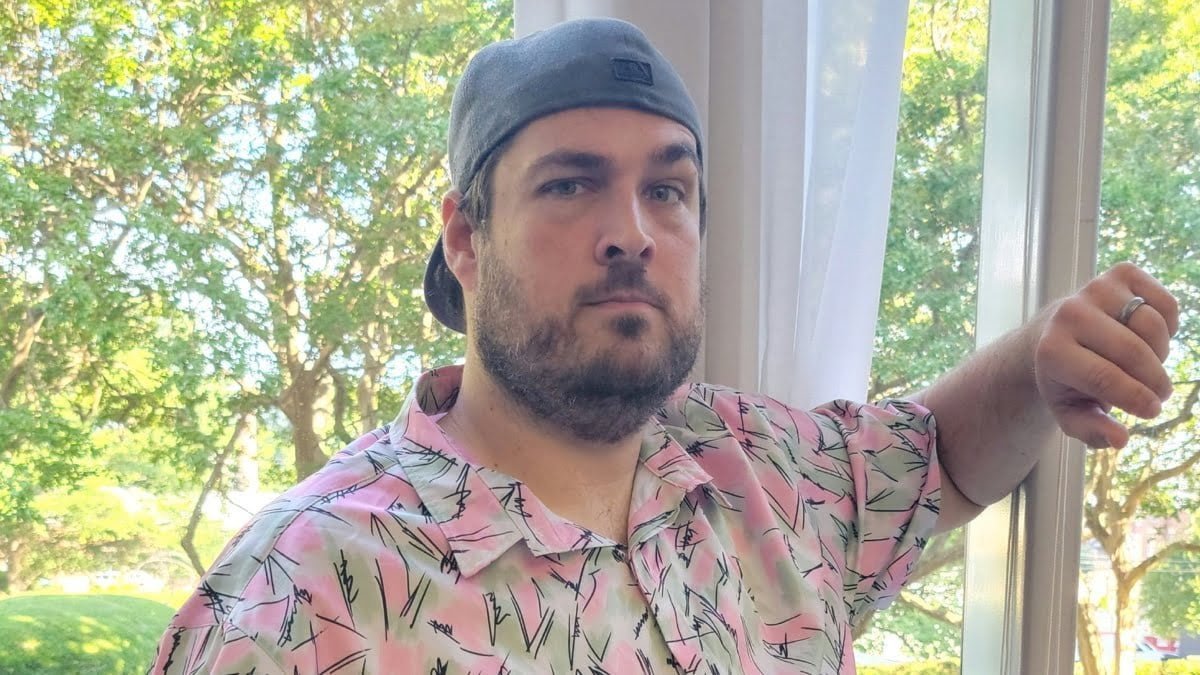I’m going to be that guy. You know, the one who takes something totally harmless that everyone is enjoying and decides he should explain why this thing isn’t as great as everyone thinks. Invariably, this criticism will be prefaced with the word “actually.” Yeah, that guy.
So here goes: As entertaining as Brian Windhorst’s two minutes of theatrical conjecture was on First Take last Friday, it was actually a demonstration of things that hosts and analysts should avoid. It was self-indulgent. It came at the expense of the moderator, Christine Williamson, and co-panelists Freddie Coleman and Courtney Cronin. Most of all, it was a deliberately vague way to communicate what should have been a fairly straightforward analysis: there were signs that Danny Ainge would do in Utah what he did in Boston, which is why Rudy Gobert may be on the trade block.
Windhorst’s soliloquy spawned a thousand memes and entertained us all the Friday before a holiday weekend, but upon further review, I’ve decided it was like watching a man smell his own farts and describe them as if they were a wine.
Look, I gave you fair warning that I was going to be that guy. It doesn’t mean I’m wrong, though.
Windhorst’s theatrics were memorable. They were funny. I’ve screen-shotted a few of them myself. It is not something to be emulated, though, nor heralded as some sort of master class. The result may have been unforgettable, but the process that led to it had some serious issues. Let’s take a look.
Windhorst: “There was a trade yesterday between the Utah Jazz and the Brooklyn Nets. A very strange trade. A very strange trade. You’d really have to be a Jazz or a Nets fan to even know what I’m talking about right now.”
Freddie Coleman: “OK.”
Windhorst: “I don’t know even know if you guys know what I’m talking about.”
Christine Williamson: “I’m at the edge of my seat. I have Woj’s notifications turned on, but I don’t remember this.”
Pause.
Rhetorical questions are a terrible tool to use on a panel unless you’re actually seeking to minimize the expertise of your colleagues. Windhorst openly questions whether they even know about the transaction he’s talking about, which puts his colleagues in a no-win situation. If they answer him correctly, they appear like students responding to the teacher. If they answer it incorrectly, it shows they’re as clueless as he’s implying.
In either case, Windhorst isn’t really looking for the answer. He’s seeking to build suspense, but he’s doing it at the expense of his colleagues.
OK. Let’s resume.
Windhorst: “They traded Royce O’Neale, who is a role-playing 3-point, defensive shooter to Brooklyn for a future first-round draft pick. And so you’re going, ‘What do you care about Royce O’Neale? Why does that matter? Why would the Jazz do that?’
“Why would the Jazz – who have two stars on their roster – take a player who’s one of their starters and best defensive players and trade him in a salary-dumping move? Why would they do that?”
Courtney Cronin: “To open space to try to land Kevin?”
Windhorst: “No.”
Coleman: “Part of a three-team trade?”
These are totally reasonable suggestions from Cronin and Coleman given that the question on the First Take chyron is “Where is the best landing spot for Durant?” Windhorst is asking questions, and they’re trying to be good teammates by playing along. Their reward is to look like they’re being schooled by Windhorst’s X-ray vision into the significance of this move, which by the way, he has decided to make the centerpiece of a discussion that was supposed to be about Durant.
Let’s see where he goes next.
Windhorst: “You say, ‘Why did Quin Snyder walk away from that job?’”
Williamson: (Leans in) “OK?”
Windhorst: “And you say, ‘When Danny Ainge, the last time he hired a coach, it was Brad Stevens.’ “
Coleman: “Right.”
I’m sorry, but you’re the one saying those things, Brian. You’re the one who’s setting up this line of inquiry, and you’re leaving your colleagues to try and intuit where the hell you’re going while using this whole second-person construction.
Is your point that Danny Ainge might be following the same blueprint in Utah that he executed in Boston? Because that’s a really good point. And instead of letting everyone twist themselves dizzy try to get there, why don’t you, I don’t know, say what you mean in the fewest words possible. That’s kind of the whole idea of effective communication.
OK. Sorry. Getting carried away. Go ahead, resume, Brian.
Windhorst: “What happened that same year? What did he do, when he hired this young coach who had never coached in the NBA before, and he gave him a long contract. He gave Brad Stevens a six-year contract. Will Hardy – who they just hired, who could potentially be a great young coach – they gave him a 5-year contract. Very rare for a first-time head coach to get a 5-year contract. Why? What’s going on in Utah?”
Williamson: “What’s going on in …”
Windhorst: “And that’s what people in the league are watching right now.”
Coleman: “OK.”
Time for a rhetorical question of my own: Why in world would it be at all surprising the front-office executives who run the 28 other NBA teams are intensely interested in this trade? Isn’t that what these executives are paid to do? They’re supposed to be intensely interested in what their competitors are doing. In fact, I would think that an executive would have to be criminally negligent NOT to be wondering what this trade signified about the intentions and plans of this playoff team with a new general manager who has just traded a starter. Why is this noteworthy?
Windhorst: “What’s going on in Utah?”
OK. I’ll bite, Brian. What do you think is going on in Utah? I mean, I’m more interested in where Durant will wind up, and that was supposed to be this segment, but we’re an awful long way from home now, and I’ve invested enough time that I am legitimately curious as to what this Utah team with this new general manager and this new coach might be doing that would prompt them to deal Royce O’Neale.
Windhorst: “And so I think the Brooklyn Nets and the Phoenix Suns need to find out what’s going on in Utah as well. Because what else happened that first year that Brad Stevens got hired? Danny Ainge traded Kevin Garnett and Paul Pierce.”
Coleman: “To the Brooklyn Nets.”
God bless Freddie Coleman. Man is he trying. What a total pro. He’s listened to Windhorst wander through his thoughts for nearly two minutes now, and Coleman is trying, he’s really trying, to connect this back to the actual subject of this segment which is a potential destination for Durant. Alas, no.
Windhorst: “That trade, that Royce (O’Neale) trade, it was a very strange trade.”
Now, credit where it’s due: The O’Neale trade did in fact portend a sea change in Utah, which did end up unloading one of the two stars Windhorst mentioned, trading Rudy Gobert to the Minnesota Timberwolves.
It’s not the location of Windhorst’s soliloquy that’s my issue here, but his pitch selection. He clearly knew something was going on in Utah. He said as much later on an episode of his podcast, The Hoop Collective with Brian Windhorst.
Windhorst and Tim McMahaon were talking about the possibility of Gobert being traded the night before Windhorst’s First Take appearance. McMahon disclosed the actual details.
“It was pretty close to the trade that went down,” Windhorst said. “The biggest difference was that we thought Jaden McDaniels was going to be in that trade. The Jazz wanted Jaden McDaniels in that trade. The ‘Wolves refused, and that is reflected in the number of picks and the lack of protection on the picks.”
OK. So why didn’t Windhorst say that more directly? In part, because he wanted to avoid having that statement aggregated as Jordan Bondurant summarized at Barrett Sports Media on Thursday.
So instead of saying what he thought, Windhorst went through a two-minute journey of rhetorical questions and hand gestures, forcing his colleagues to follow along and try and guess what he was going on about. The end result was that a discussion about potential landing spots for Durant turned into a thorough examination of all the signs that pointed to the Jazz doing something big without ever saying something big despite the fact the man conducting this examination had a pretty good idea of what that something big was.
Was it good television? Sure. It was memorable and cut through on the Friday before a holiday weekend. It’s just not an approach anyone would be advised to repeat, including Windhorst.
Danny O’Neil is a sports media columnist for BSM. He has previously hosted morning and afternoon drive for 710 ESPN Seattle, and served as a reporter for the Seattle Times. He can be reached on Twitter @DannyOneil or by email at Danny@DannyOneil.com.








